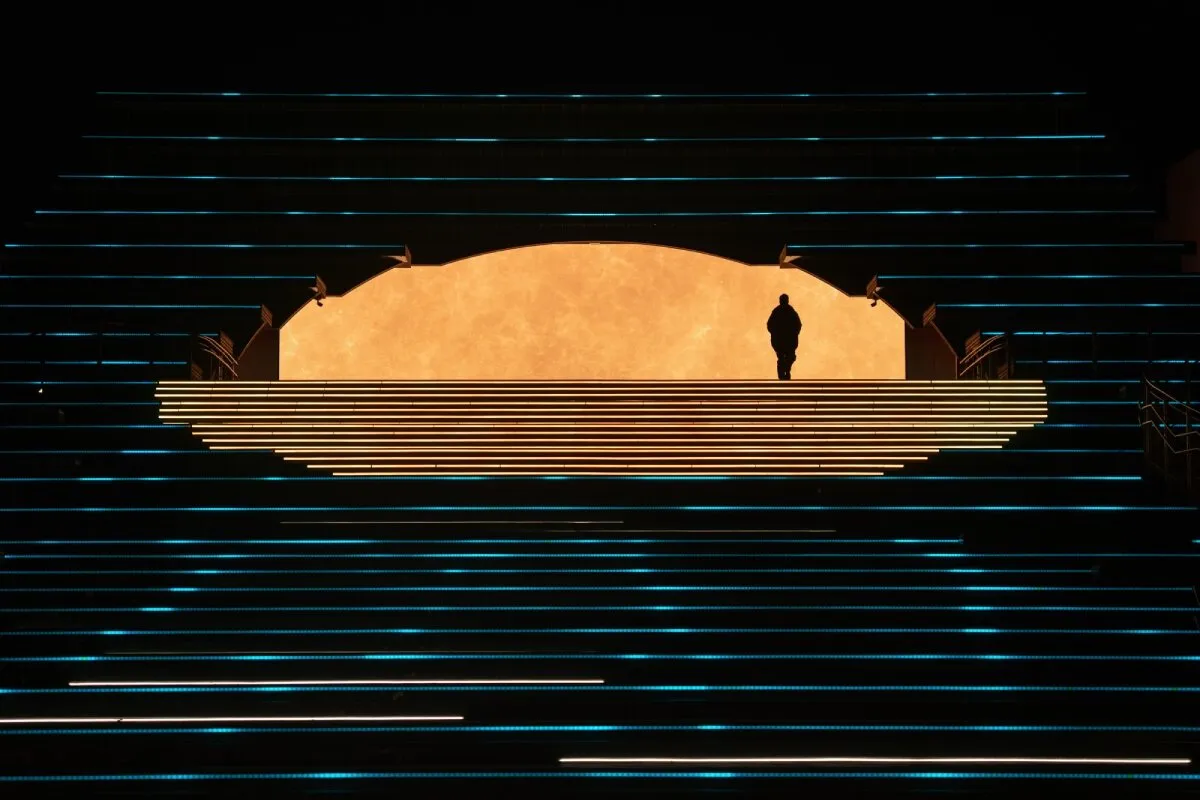As the highly anticipated Expo 2025 Osaka approaches its grand inauguration, the excitement reverberates across a global stage, encompassing governments, artists, architects, and intellectuals. Among those documenting this architectural phenomenon is American photographer William Mulvihill, whose evocative lens captures not only the evolving splendor of national pavilions but also their deeper cultural narratives. His striking photographic series unfolds a nuanced dialogue of identity and innovation, portrayed through an intricate interplay of materials—steel, glass, wood, and light—all serving as conduits for international expression.
Capturing the Soul of a Global Stage
Mulvihill’s photography transcends the mere visual updates synonymous with construction site documentation. Instead, it serves as a philosophical exploration of national identities as they contribute to a collective vision represented at the Expo. His lens, meticulously focused on the man-made Yumeshima Island in Osaka Bay—a site already rich in cultural history—integrates the structures’ engineering feats with their artistic significance. Each pavilion emerges as both an architectural masterpiece and an emblem of cultural story-telling, encapsulating individual hopes and aspirations under the unifying theme of “Designing a Future Society for Our Lives.”
The Portugal Pavilion
One notable example is the Portugal Pavilion, designed by Kengo Kuma & Associates. This pavilion stands out with its visually striking structure composed of recycled fishing nets and suspended ropes, creating a translucent facade that undulates like ocean waves. Mulvihill’s photographs expose the tactile qualities of this innovative facade, emphasizing the pavilion’s conceptual ethos steering away from traditional architectural boundaries.
The themes presented at the pavilion—“Ocean: The Blue Dialogue”—embody Portugal’s historical maritime connections with Japan while advocating for climate sustainability through poignant digital storytelling. This design eschews conventional barriers, favoring a model that prioritizes lightness, openness, and principles of a circular economy through judicious material choices.
The Italy Pavilion
In contrast to Portugal, the Italy Pavilion, crafted by Mario Cucinella Architects, invites visitors into a reimagining of the Città Ideale, or Ideal City. This structure consists of interconnected public spaces—plazas, gardens, and theatrical areas—designed with flexibility to host various performances and exhibitions. The representation of the Holy See within the pavilion further enriches Italy’s dual role as a cultural steward and a contemporary innovator.
The France Pavilion
Meanwhile, the French Pavilion, a collaborative creation by Coldefy and CRA-Carlo Ratti Associati, embarks on a multisensory journey, where visitors engage with nature and technology. With sharp geometric forms and an elegant material palette, Mulvihill skillfully documents how visitors’ experiences evolve as they navigate through spaces optimized for light and sound, prompting questions surrounding ecological awareness and empathetic design.
Innovative Narratives from Spain and Belgium
The narratives continue with Spain’s pavilion, which showcases a design—a collaboration of Enorme Studio and others—that resonates with the Kuroshio Current, bridging Spain and Japan through its architectural language. In stark contrast, Belgium’s pavilion, developed by Carré 7 and others, explores the states of water—solid, liquid, and gaseous—across three distinct but connected levels. This showcase illustrates how architecture can narrate experiences and innovations in sectors like healthcare and life sciences.
Lessons from the Nordic Pavilion
The Nordic Pavilion, brought to life by AMDL Circle, encapsulates the unity of Denmark, Finland, Iceland, Norway, and Sweden under a modular roof. Constructed entirely from sustainably sourced wood, its sleek design embodies circular economy principles. The pavilion showcases the region’s dedication to environmental stewardship while providing visitors with spaces for interaction and rest.
The Path Forward
As Expo 2025 Osaka nears realization, the intricate interplay of architectural ambition and cultural identity signifies a momentous occasion not just for Japan, but for the global community at large. Mulvihill’s keen eye captures not merely the exterior of these structures but layers deeper reflections on hope, innovation, and identity—each image serving as a catalyst for discussions on our shared future. As nations unify under the banner of design and collaboration, their stories become intertwined, offering a vivid preview of the world to come.
Conclusion
This celebratory showcase of national pavilions highlights each country’s unique perspective while addressing collective global challenges. As we approach the opening of Expo 2025 Osaka, Mulvihill’s photography serves as an essential archive that freezes in time the dialogues, aspirations, and confluences of ideas that will shape our future.
—
Photographer: William Mulvihill / @williamulvihill
Tags:
#Expo2025 #Japan #Architecture #CultureNews #TourismNews

